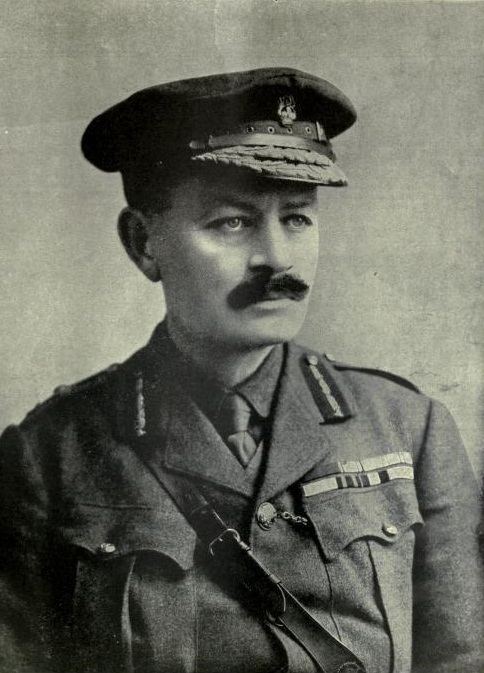 | ||
The Force in Egypt was a British Army formation established in August 1914 to administer garrisoning armed forces in Egypt at the beginning of the First World War. The force had the objective of protecting the Suez Canal and was originally commanded by Major General Julian Byng, but he was replaced by General J. Maxwell, who took command on 8 September 1914. Initially, the main threat to the Suez came from Germany and throughout the early months several of the force's elements were sent to Europe to take part in the fighting on the Western Front. On 5 November 1914, Britain and France declared war on the Ottoman Empire, after which the Force in Egypt faced a direct threat from Ottoman forces, which was realised in February 1915 with a raid on the Suez Canal. This threat remained until 1916 when the British forces went on the offensive.
Contents
- August 1914
- September 1914
- January 1915
- Suez Canal Defences 15 January 1915
- Sector I Port Tewfik to Geneffee
- Sector II Deversoir to El Ferdan
- Sector III El Ferdan to Port Said
- April 1915
- 9 July 1915
- November 1915
- References
The composition of the force changed several times due to the varying availability forces. By the end of 1914, the forces deployed in defence of the Suez Canal under Maxwell totaled approximately 30,000 troops. The main elements of this force were the 10th Indian Division (Major General A. Wilson), the 11th Indian Division, the Imperial Service Cavalry Brigade, and the Bikaner Camel Corps, as well as elements from the Indian Mountain Artillery and the Egyptian Army Artillery. In addition, several British and French warships in the canal served as floating batteries and there were several aircraft available for reconnaissance. Following the opening of the Gallipoli Campaign, the Force in Egypt was reduced mainly to a training and reinforcement camp until forces were withdrawn from the Gallipoli Peninsula and returned to Egypt in December 1915.
In 1916, the Force in Egypt was merged with the Mediterranean Expeditionary Force to form the Egyptian Expeditionary Force (EEF). General Sir Archibald Murray was given command and additional resources and the mission of the EEF changed from the defence of the Suez to an invasion of Palestine.
August 1914
3rd Dragoon GuardsT Battery, Royal Horse Artillery7th Mountain Battery, Royal Garrison Artillery2nd Field Company, Royal Engineers2nd Battalion, Devonshire Regiment1st Battalion, Worcestershire Regiment2nd Battalion, Northamptonshire Regiment2nd Battalion, Gordon Highlanders and auxiliary services.September 1914
In addition to the above, two units from the 3rd (Lahore) Division were added:
9th (Sirhind) BrigadeIII Mountain Artillery BrigadeShortly afterwards, as a result of the Sinai frontier being crossed, Lord Kitchener ordered additional forces in the form of the East Lancashire Division (Territorial Force) with two Yeomanry regiments to follow, although several elements that were assigned to the Force in Egypt in August 1914 were shipped to France.
By October 1914, the 9th (Sirhind) Brigade was under orders to deploy to France but was retained until the 22nd (Lucknow) Brigade arrived.
The following forces were promised and on their way to Egypt in October 1914:
Bikanir Camel CorpsImperial Service Cavalry Brigade32nd (Imperial Service) Brigadeeight Indian battalionsthree more Indian brigades.January 1915
(total force 70,000)
10th Indian Division11th Indian DivisionImperial Service Cavalry BrigadeBikanir Camel CorpsIndian Mountain Artillery (three batteries)Egyptian Army Artillery (one battery)Royal Flying Corps detachmentFrench naval seaplanesIn training
Australian and New Zealand Army Corps (ANZAC)42nd (East Lancashire) DivisionSuez Canal Defences: 15 January 1915
Advanced Ordnance Depot ZagazigGarrison railway and Sweetwater CanalGeneral Reserve Camp, MoascarSector I: Port Tewfik to Geneffee
Headquarters at Suez30th Indian Brigadeone squadron of Imperial Service Cavalryone company from the Birkanir Camel Corpshalf company of Sappers and Minersone battery from the Royal Field Artillery (Territorial)one Indian field ambulanceSector II: Deversoir to El Ferdan
Headquarters at Ismailia Old Camp22nd (Lucknow) Brigade28th Indian Brigadeone squadron Imperial Service Cavalrythe Birkanir Camel Corps (less three and a half companies)a machine gun section from the Egyptian Camel Corpsone battery from the Royal Field Artillery (Territorial)one battery from the Indian Mountain Artillerytwo Indian field ambulancesSector III: El Ferdan to Port Said
Headquarters El-Qantarah29th Indian Brigadeone battalion from the 22nd (Lucknow) Brigadeone squadron from the Imperial Service Cavalrytwo companies from the Birkanir Camel Corpshalf company of sappers and minerstwo batteries from the Royal Field Artillery (Territorial)26th Battery, Indian Mountain Artilleryarmoured train with a half company of Indian infantrywireless section (Territorial)Indian field ambulanceDetachment Royal Army Medical Corps (Territorial)April 1915
During April the 29th Indian Brigade and the East Lancashire Division were sent to Gallipoli. The 2nd Mounted (Yeomanry) Division arrived to take their place by 29 April.
Sent to Gallipoli as part of the Mediterranean Expeditionary Force
ANZAC Corps42nd (East Lancashire) Divisionone Indian brigade (incomplete)Sent to Basra
one Indian brigadeSent to Aden (to defend Yemen against a possible attack)
Aden Brigade9 July 1915
The total force of 69,765 personnel consisted of:
one Yeomanry brigade: 1,054 personnel2nd Mounted Division: 8,242 personnelIndian Expeditionary Force "E" (under orders for Aden): 15,940 personnel5th, 6th, 7th Australian Brigades in process of arriving: 5,212 personnelANZAC: 10,243 personnel29th Divisional Supply Column: 312 personnelregulars, details, depot: 829 personnelMediterranean Expeditionary Force base: 28,134 personnelBy November 1915, the Force in Egypt had been reduced largely to a training and reinforcement camp. Although there were 60,000 troops in Egypt, these were mainly details of formations fighting at Gallipoli and ANZACs in training.
November 1915
Western Frontier Force (Major General A. Wallace)
Composite mounted brigade1/1st Nottinghamshire Royal Horse ArtilleryComposite infantry brigadeSome South African troops and a New Zealand battalion were added after November 1915.
On 10 March 1916, the Force in Egypt was merged with the Mediterranean Expeditionary Force to form the Egyptian Expeditionary Force.
